Galician Legion Propaganda Labels
Sept 2, 2014 15:41:56 GMT -5
kacyds, Gordon Lee, and 5 more like this
Post by PostmasterGS on Sept 2, 2014 15:41:56 GMT -5
In honor of my recognition as poster of the month, here's another unusual set from deep in the collection.
But as usual, a little history lesson first...
Following WWI, the former territories of Austria-Hungary were ripe for the picking by the victorious allies. Among the pieces was Galicia, a territory on the Austro-Hungarian border with Poland and the Soviet Union (Ukraine, specifically). Historically, portions of Galicia had, at various times, been Polish or Ukrainian territories, and the population of Galicia was majority Ukrainian in the east, and majority Polish in the west, despite the fact it was Austro-Hungarian territory. As with many Slavic territories at the time (and today), the artificial boundaries containing dramatically disparate populations led to great ethnic and political strife.
Following the Polish-Ukrainian War of 1918-1919, Eastern Galicia was incorporated into Poland. Yet, because of the majority Ukrainian population, Ukrainian independence movements were constantly at work. Several of these had close contacts with the German intelligence service, the Abwehr.
Under the terms of the Molotov–Ribbentrop Pact between Germany and the Soviet Union (23 August 1939), Eastern Galicia was to be given to the Soviet Union upon the division of Poland. Following the German and Soviet invasions in September 1939, this was exactly what was done.
Then, of course, Germany decided to invade the Soviet Union, and in 1941, Galicia was occupied by the Germans.
So for those following at home -- Ukraine + Poland + Austria-Hungary + Poland + Soviet Union + Germany. Phew...
As it did with success in its occupied territories throughout Europe, Germany eventually sought to form SS units composed of men from Galicia.
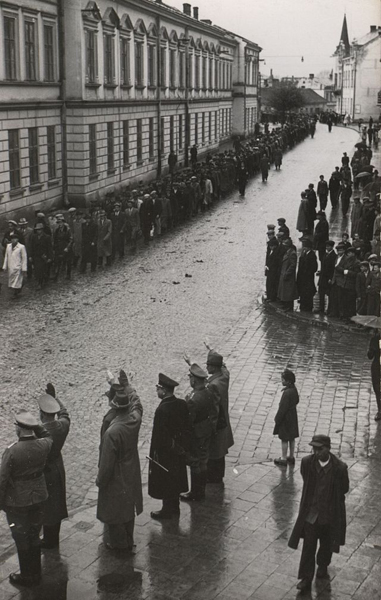
Galician volunteers in the streets of Sanok, May 1943
In April 1943, the 14th SS-Volunteer Division "Galician" (later renamed 14th Waffen Grenadier Division of the SS (1st Galician)) was formed, consisting mainly of men from Galicia with a Ukrainian background. It is also commonly referred to as the Galician Legion.
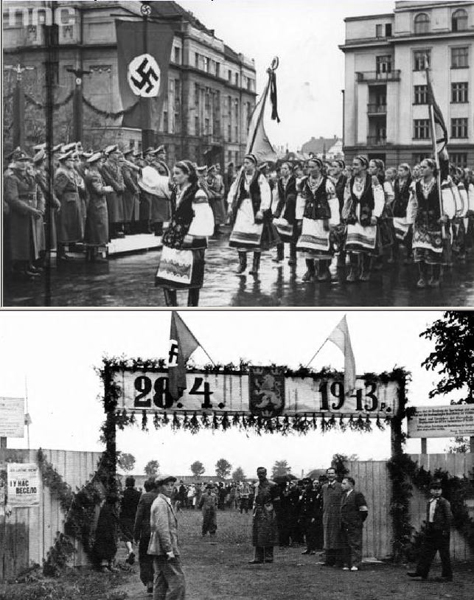
Galicians celebrating the formation of the Legion in April 1943
Their purpose was to fight the Bolsheviks on the Eastern Front. Their primary support was derived from anti-communists, specifically those who sought German support in the pre-war power struggles.

Galician Legion recruitment poster
The division was see action primarily in anti-partisan actions in Ukraine, Poland, Austria, and Slovakia.
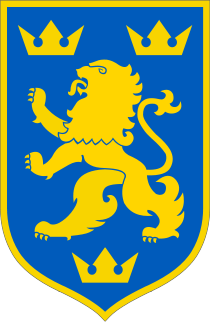
Galician Legion shield
And on to the philately...
As with many of the legions, propaganda labels were printed to support the legion. The Galician ones are among the rarest.
These two labels were issued in September 1943. They could be purchased at the Divisional Support Establishment Offices in the city of Lviv, the largest city in Galicia at that time. The proceeds from the sale went to benefit the Divisional Welfare Fund.
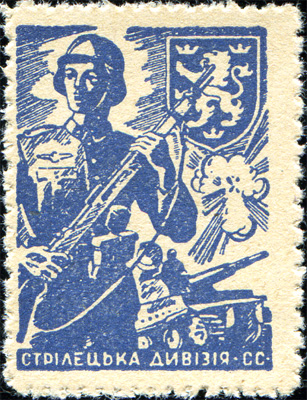
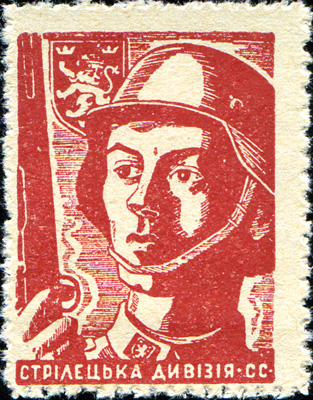
Neither stamp has a face value, but the purchase price was 5 złoty per set. The design features soldiers of the Legion, and Ukrainian text which translates to SS Riflemen Division.
If you see one of these, snap it up. They don't make an appearance very often.
But as usual, a little history lesson first...
Following WWI, the former territories of Austria-Hungary were ripe for the picking by the victorious allies. Among the pieces was Galicia, a territory on the Austro-Hungarian border with Poland and the Soviet Union (Ukraine, specifically). Historically, portions of Galicia had, at various times, been Polish or Ukrainian territories, and the population of Galicia was majority Ukrainian in the east, and majority Polish in the west, despite the fact it was Austro-Hungarian territory. As with many Slavic territories at the time (and today), the artificial boundaries containing dramatically disparate populations led to great ethnic and political strife.
Following the Polish-Ukrainian War of 1918-1919, Eastern Galicia was incorporated into Poland. Yet, because of the majority Ukrainian population, Ukrainian independence movements were constantly at work. Several of these had close contacts with the German intelligence service, the Abwehr.
Under the terms of the Molotov–Ribbentrop Pact between Germany and the Soviet Union (23 August 1939), Eastern Galicia was to be given to the Soviet Union upon the division of Poland. Following the German and Soviet invasions in September 1939, this was exactly what was done.
Then, of course, Germany decided to invade the Soviet Union, and in 1941, Galicia was occupied by the Germans.
So for those following at home -- Ukraine + Poland + Austria-Hungary + Poland + Soviet Union + Germany. Phew...
As it did with success in its occupied territories throughout Europe, Germany eventually sought to form SS units composed of men from Galicia.

Galician volunteers in the streets of Sanok, May 1943
In April 1943, the 14th SS-Volunteer Division "Galician" (later renamed 14th Waffen Grenadier Division of the SS (1st Galician)) was formed, consisting mainly of men from Galicia with a Ukrainian background. It is also commonly referred to as the Galician Legion.

Galicians celebrating the formation of the Legion in April 1943
Their purpose was to fight the Bolsheviks on the Eastern Front. Their primary support was derived from anti-communists, specifically those who sought German support in the pre-war power struggles.

Galician Legion recruitment poster
The division was see action primarily in anti-partisan actions in Ukraine, Poland, Austria, and Slovakia.

Galician Legion shield
And on to the philately...
As with many of the legions, propaganda labels were printed to support the legion. The Galician ones are among the rarest.
These two labels were issued in September 1943. They could be purchased at the Divisional Support Establishment Offices in the city of Lviv, the largest city in Galicia at that time. The proceeds from the sale went to benefit the Divisional Welfare Fund.


Neither stamp has a face value, but the purchase price was 5 złoty per set. The design features soldiers of the Legion, and Ukrainian text which translates to SS Riflemen Division.
If you see one of these, snap it up. They don't make an appearance very often.






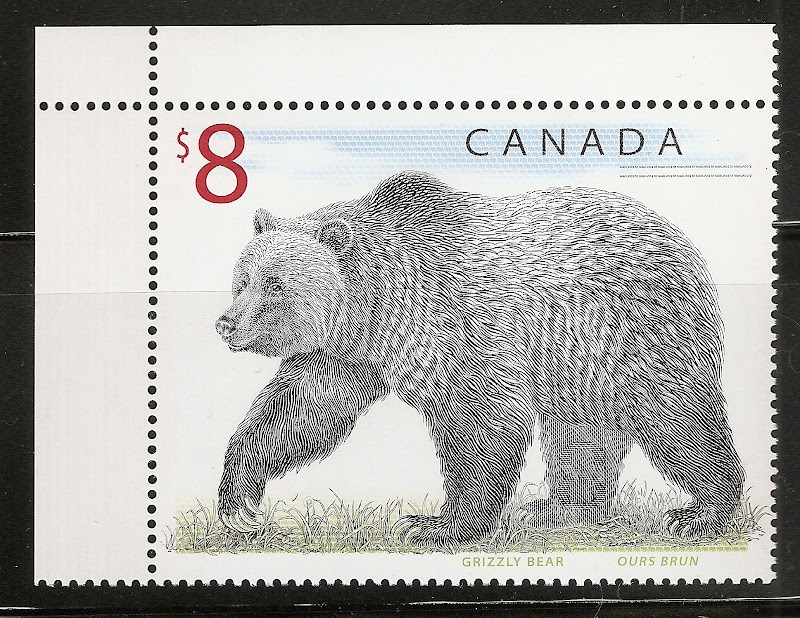


 Thank you
Thank you 